Choosing the right yoga activewear can make or break your practice experience. Whether you’re flowing through sun salutations or holding challenging poses, the right clothing moves with you, keeps you comfortable, and boosts your confidence on the mat.
Essential features of quality yoga activewear
When choosing quality yoga activewear, the first feature to consider is fabric performance. Look for materials that offer a balance of stretch and support, like nylon-spandex blends, which move with your body while maintaining shape. Moisture-wicking properties are equally important to keep you dry during intense sessions.
Seamless Construction for Comfort
High-quality yoga wear often features flatlock or seamless stitching to prevent chafing during repetitive movements. These designs distribute tension evenly across the fabric, making them ideal for poses that require full range of motion.
Strategic Compression Zones
Premium activewear incorporates targeted compression in key areas like the waistband and seams. This provides muscle support without restricting movement, enhancing both performance and recovery.
Breathability shouldn’t be compromised – mesh panels in high-sweat areas like the back or underarms significantly improve airflow. Many advanced fabrics now include antibacterial treatments to maintain freshness between washes.
Functional Design Elements
Look for practical details like gusseted crotches in pants for modesty during inversions, or tops with built-in bras that offer adequate support without extra layers. Reflective accents are valuable for those who transition from studio to street.
Lastly, examine the elastic recovery by stretching the fabric – it should snap back without sagging. Quality activewear maintains its shape after multiple wears and washes, proving its durability over time.
How fabric choice affects your yoga practice
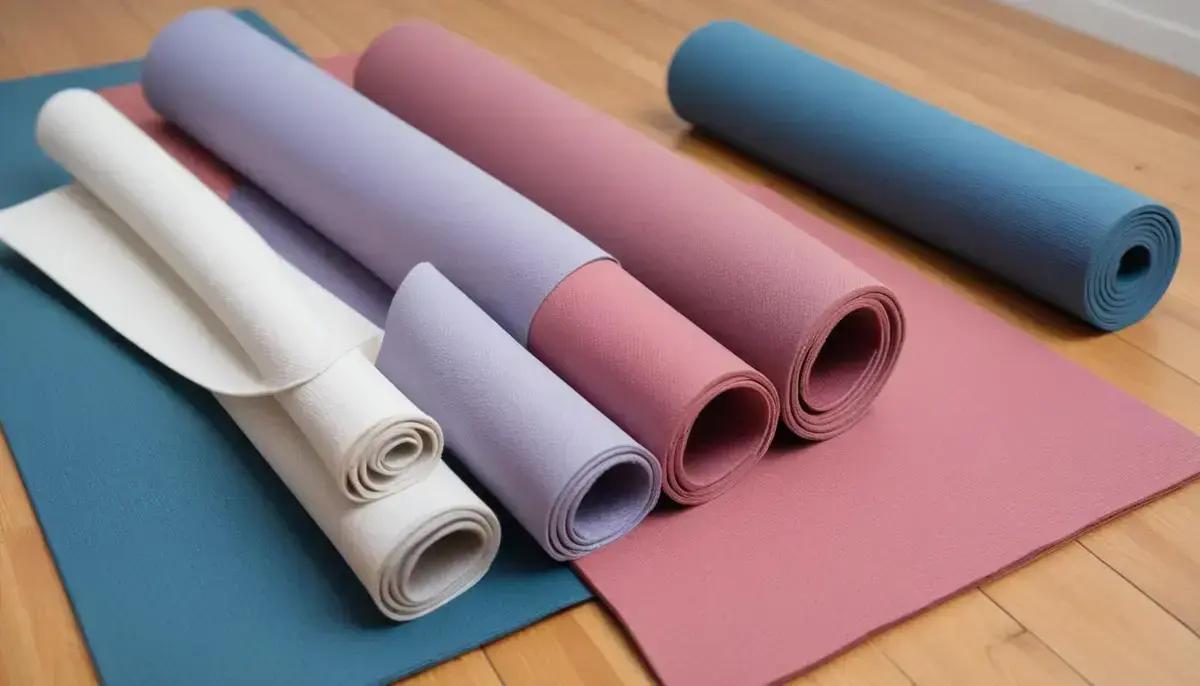
Your yoga practice transforms completely when you wear the right fabric. Different materials affect your comfort, movement, and even your body temperature during sessions. Moisture-wicking synthetics like polyester blends keep you dry in hot yoga, while natural fibers like organic cotton offer breathability for gentler practices.
Synthetic vs Natural Fibers
Synthetic fabrics (polyester, nylon, spandex) excel in intense sessions with their four-way stretch and quick-drying properties. Natural fibers (bamboo, cotton, hemp) feel softer against skin but may retain sweat, making them better for restorative yoga or meditation.
The Science of Fabric Performance
High-tech fabrics with open-knit constructions improve airflow exactly where you need it most. Some premium materials even incorporate mineral-based yarns that help regulate body temperature throughout your practice.
For heated classes, seek fabrics with thermoregulating properties that adapt to your body’s changing temperature. The wrong choice can leave you either overheating or feeling chilled during savasana.
Specialized Yoga Fabrics
Innovative materials like recycled performance fabrics offer eco-conscious options without sacrificing function. Some brands now use antibacterial silver ions woven into fibers to prevent odor buildup between washes.
Remember that fabric thickness matters too – ultra-lightweight materials work for flow sequences, while slightly heavier fabrics provide modest coverage during inversions. The ideal fabric should disappear on your body, letting you focus solely on your practice.
Finding the perfect fit for your body type
Finding yoga activewear that fits your body type makes all the difference in comfort and performance. The right fit should feel like a second skin – snug but not restrictive, allowing full range of motion without constant adjustments during poses.
Understanding Body Proportions
For petite frames, look for brands offering shorter inseams and torso lengths. Taller yogis should seek extended sizes with longer rises in pants and elongated torso sections in tops. Curvier body types benefit from wide waistbands that stay put without digging in.
Fit Solutions by Body Shape
Apple shapes: Opt for high-waisted leggings with tummy control panels and flowy tops. Pear shapes: Choose compression-style leggings with strategic seaming to sculpt, paired with fitted tops. Athletic builds: Look for contoured waistbands that prevent gaping.
For larger busts, built-in bras with adjustable straps and wider bands provide essential support. Those with smaller busts may prefer compression tops or bralettes for freedom of movement.
Trying Before Buying
Always test the squat test – leggings shouldn’t become sheer when stretching. Check that waistbands stay in place during forward folds and that tops don’t ride up during inversions. Seam placement should follow your natural curves without pulling.
Remember that sizing varies widely between brands – your perfect fit might be a different size than usual. Focus on how the clothing moves with you rather than the number on the tag.
Breathability and moisture-wicking properties
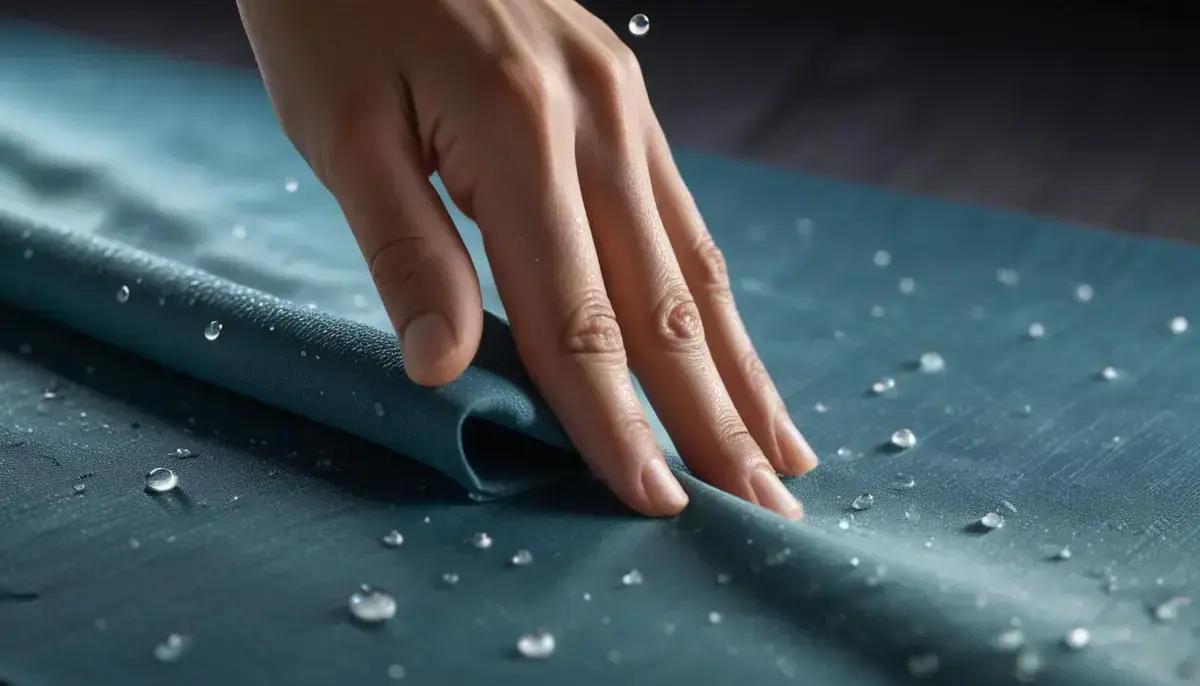
When it comes to yoga activewear, breathability and moisture-wicking properties can make or break your practice. These features work together to keep you cool, dry and comfortable throughout your session, preventing distractions from sweat-soaked fabric.
How Moisture-Wicking Works
Quality performance fabrics use capillary action to pull sweat away from your skin to the fabric’s outer surface where it can evaporate. Look for technical blends containing polyester or nylon with special hydrophilic treatments for maximum wicking efficiency.
Breathability Features to Seek
Strategic mesh paneling in high-sweat areas (underarms, back, behind knees) dramatically improves airflow. Some advanced fabrics incorporate micro-perforations or 3D textures that create air channels without compromising coverage.
For hot yoga enthusiasts, fabrics with phase-change technology actively regulate temperature by absorbing excess heat when you’re working hard and releasing it when you cool down.
Performance vs Comfort Balance
While 100% cotton feels soft, it retains moisture and can leave you feeling damp. Modern bamboo blends offer a happy medium – naturally breathable with moderate wicking capabilities, ideal for gentle practices.
Remember that proper care maintains these properties – avoid fabric softeners that coat fibers and reduce wicking ability. Instead, use sports detergent to preserve technical fabric performance.
Durability factors to consider before buying
Investing in durable yoga activewear saves money long-term and ensures your clothes withstand repeated use. Key durability factors include fabric composition, stitch quality, and elastic recovery – all crucial for maintaining shape and function over time.
Fabric Durability Tests
Perform the stretch test – quality fabrics should return to original shape after stretching. Check for pilling resistance by rubbing the fabric – smooth surfaces indicate longer-lasting material. Look for reinforced gussets and double-stitched seams in high-stress areas.
Construction Quality Indicators
Flatlock stitching prevents chafing while maintaining structural integrity. Seamless designs eliminate weak points but require premium yarns to ensure durability. Waistbands should have internal silicone grips to prevent rolling without compromising comfort.
For colorfastness, check if the fabric has been solution-dyed – this process bonds color at the molecular level for fade resistance. Darker colors typically show wear less than light hues.
Care Instructions Impact
Machine-washable doesn’t always mean durable – look for specific wash cycle recommendations. Avoid fabrics requiring special detergents or air drying unless you’re committed to the maintenance. Tags should indicate shape retention after multiple washes.
Premium brands often provide abrasion ratings – higher numbers (20,000+ rubs) indicate better durability. Remember that the most expensive option isn’t always the most durable – focus on construction quality over brand names.
Best yoga activewear styles for different practices
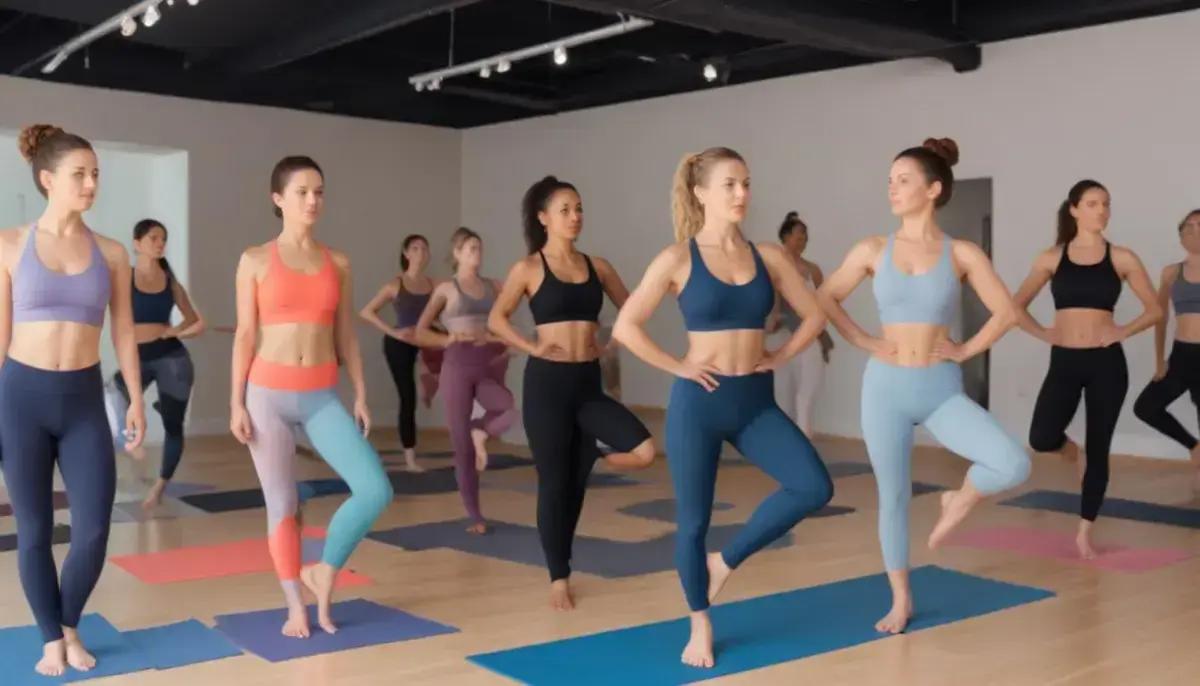
Different yoga styles demand specific activewear features to enhance your practice. Vinyasa flows require form-fitting clothes that won’t ride up during sun salutations, while restorative yoga benefits from softer, looser fabrics that allow complete relaxation.
Hot Yoga Essentials
For heated practices, choose ultra-breathable leggings with mesh panels and moisture-wicking crop tops that provide coverage during inversions. Look for fabrics with cooling technology to regulate body temperature in humid conditions.
Yin & Restorative Wear
Slower practices call for stretchy bamboo blends or soft cotton with gentle compression. Wide-leg pants allow unrestricted movement during long holds, while wrap-style tops provide adjustable comfort for various seated positions.
For aerial yoga, prioritize full-coverage tops that stay put when upside down and leggings with grippy seams to prevent fabric slippage on the hammock. Avoid loose clothing that could get tangled.
Specialized Practice Gear
Power yoga enthusiasts should consider compression shorts under leggings for modesty in arm balances, while built-in shelf bras offer support during dynamic sequences. For outdoor sessions, UPF-rated fabrics provide sun protection without sacrificing stretch.
Remember that your activewear should adapt to your practice – convertible styles with removable layers work well for transitioning between heated and non-heated spaces in studio settings.
Sustainable and eco-friendly yoga clothing options
The yoga community is embracing sustainable activewear that aligns with yogic principles of environmental consciousness. Today’s eco-friendly options combine performance with planet-friendly materials like organic cotton, bamboo, and recycled polyester without sacrificing style or functionality.
Eco-Friendly Fabric Innovations
Brands are now using plant-based dyes and closed-loop water systems to reduce pollution. Recycled ocean plastics transformed into high-performance fabrics offer surprising durability while cleaning our seas. Some companies even incorporate natural antimicrobial properties from minerals like zinc and copper.
Certifications to Look For
Seek out GOTS (Global Organic Textile Standard) certification for organic materials and OEKO-TEX verification for chemical safety. The Bluesign label indicates responsible manufacturing, while Fair Trade Certified ensures ethical labor practices.
For maximum sustainability, consider modular designs with replaceable components that extend garment life. Some brands now offer take-back programs where old yoga wear gets recycled into new products.
Cost vs Environmental Impact
While eco-friendly yoga wear often costs 20-30% more, the longer lifespan of quality sustainable fabrics makes them cost-effective over time. Look for timeless designs that won’t go out of style, reducing the need for frequent replacements.
Remember that true sustainability extends beyond materials – support brands with carbon-neutral shipping, biodegradable packaging, and transparent supply chains to complete your eco-conscious yoga practice.
Budget-friendly vs premium yoga activewear
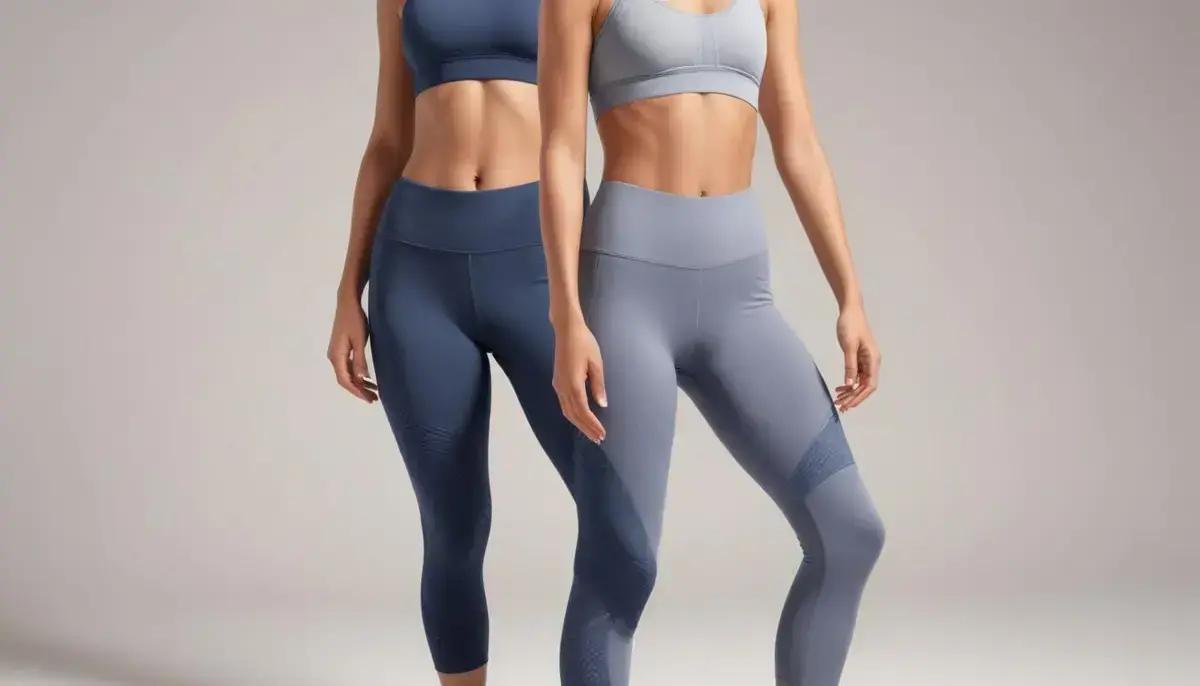
Choosing between budget-friendly and premium yoga activewear involves understanding where you can save and where it’s worth investing. While premium options often use higher-quality materials, many affordable brands now offer impressive performance at lower price points.
Key Differences in Construction
Premium activewear typically features technical fabric blends with advanced moisture-wicking properties, while budget options may use simpler polyester-spandex combinations. High-end pieces often have reinforced stitching in stress areas and more sophisticated compression panels.
Performance Comparison
In terms of breathability and stretch recovery, premium activewear generally outperforms budget options after multiple washes. However, many mid-range brands now offer surprisingly durable options that maintain 80-90% of premium performance at half the cost.
For basic yoga practices, budget leggings in the $30-$50 range often suffice, while advanced practitioners doing hot yoga or intense flows may prefer investment pieces ($80-$120) with superior sweat management.
When to Splurge or Save
Consider splurging on core pieces like high-waisted leggings you’ll wear frequently, but save on trendier items. Premium brands often justify their prices with extended warranties and repair programs that increase longevity.
Remember that proper care can elevate budget activewear – washing in cold water and air drying helps preserve elasticity regardless of price point. The best choice balances your practice intensity, frequency, and budget.
Common mistakes when choosing yoga clothes
Many yogis make avoidable mistakes when selecting their practice wear that can negatively impact their sessions. One of the most common errors is choosing ill-fitting clothes that either restrict movement or require constant adjustment during poses.
Fabric Faux Pas
Opting for 100% cotton might seem comfortable but leads to sweat retention and discomfort in dynamic practices. Conversely, some practitioners select overly compressive fabrics that restrict blood flow during long holds.
Style Over Function
While fashionable cuts are appealing, low-rise waistbands often slip during forward folds, and loose-fitting tops fall forward in inversions. Many beginners overlook the importance of seam placement, which can cause chafing in sensitive areas.
Another frequent mistake is wearing dark colors for hot yoga – while they hide sweat stains, they absorb more heat. Some practitioners also choose thick fabrics that don’t allow instructors to see body alignment for proper adjustments.
Care Considerations
Many damage their yoga clothes by using fabric softeners that coat technical fabrics, reducing moisture-wicking abilities. Others overwash their activewear, causing premature breakdown of elastic fibers.
Perhaps the biggest mistake is buying based solely on price without considering how often and for what style of yoga the clothes will be used. Investing in quality pieces for frequent practice saves money long-term.
Caring for your yoga activewear to extend lifespan
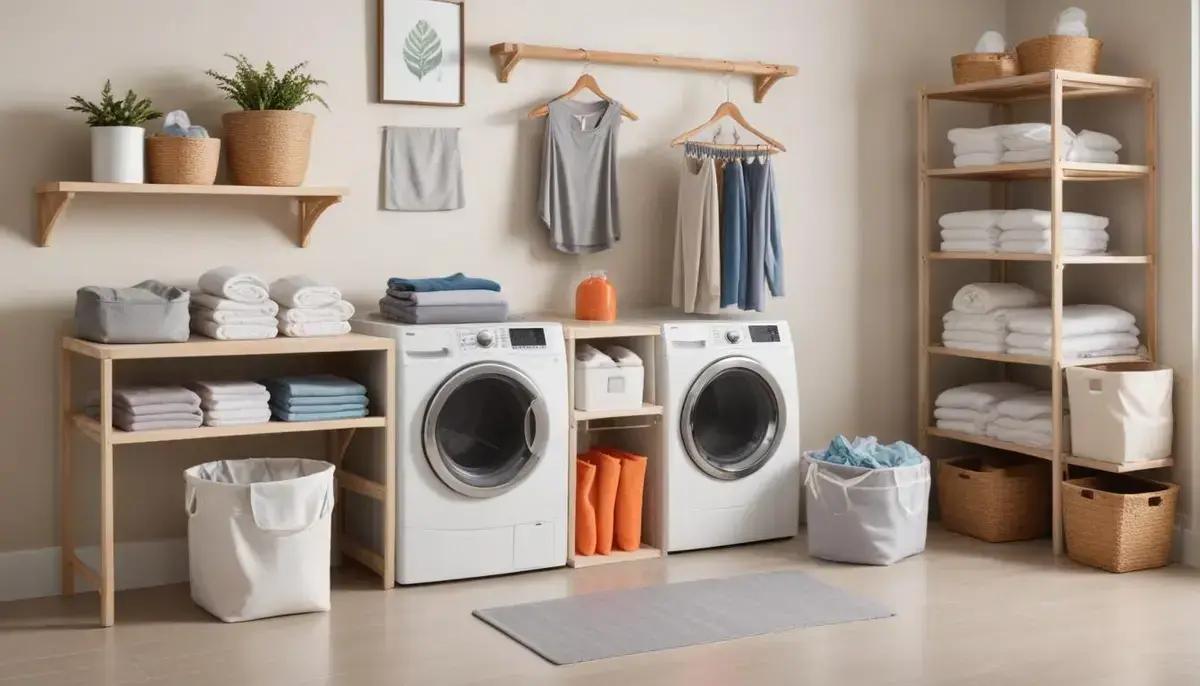
Proper care can double or triple the lifespan of your yoga activewear, maintaining its performance and appearance. The first rule is to always check care labels, as different fabrics require specific treatments to preserve their technical properties.
Washing Do’s and Don’ts
Turn clothes inside out before washing to protect outer surfaces. Use cold water and mild, enzyme-free detergents specifically designed for activewear. Avoid fabric softeners as they coat moisture-wicking fibers, reducing their effectiveness.
Drying and Storage
Air drying is ideal – hang items or lay them flat to maintain shape. If using a dryer, choose low heat settings and remove while slightly damp. Store folded rather than hung to prevent elastic strain in waistbands and straps.
For odor removal, soak in a mixture of white vinegar and water before washing rather than using harsh chemicals. Address stains immediately with gentle spot treatment to prevent setting.
Special Fabric Considerations
High-performance fabrics benefit from occasional deep cleaning with specialized sports detergents. For seamless items, wash in a mesh laundry bag to prevent snagging. Bamboo and organic cotton require gentler cycles than synthetic blends.
Rotate between multiple outfits to allow elastic recovery time between wears. With proper care, quality yoga activewear should maintain its shape and function for 2-3 years of regular use.
Top brands and what makes them stand out
The yoga activewear market features several standout brands that have earned loyal followings through innovative designs and technical excellence. Lululemon pioneered the category with their buttery-soft Luon fabric and signature waistband designs that stay put during intense sessions.
Performance Leaders
Alo Yoga dominates with high-fashion aesthetics combined with performance fabrics, while Athleta focuses on inclusive sizing and sustainable materials. Beyond Yoga stands out for their luxuriously soft fabrics that maintain shape class after class.
Innovation and Sustainability
Girlfriend Collective makes waves with 100% recycled materials and complete supply chain transparency. Prana leads in eco-conscious designs using organic cotton and hemp blends without sacrificing performance.
For budget-conscious yogis, CRZ Yoga on Amazon delivers premium quality at half the price, while Outdoor Voices offers minimalist designs perfect for studio-to-street transitions.
Specialized Offerings
Wolven thrives with their bold, artistic prints on sustainable fabrics, and Manduka focuses on durable basics that withstand daily practice. Each brand brings unique strengths – whether it’s technical innovation, size inclusivity, or eco-friendly practices – allowing yogis to find their perfect match.
Finding Your Perfect Yoga Activewear
Choosing the right yoga activewear ultimately comes down to understanding your personal practice needs and preferences. The ideal outfit should feel like a second skin – supporting your movements without distraction, keeping you comfortable through every pose, and aligning with your values whether that’s sustainability, performance, or style.
Remember that quality activewear is an investment in your practice. While premium options often deliver better durability and performance, many affordable brands now offer excellent value. The most important factors are how the clothes make you feel during your practice and how well they support your yoga journey.
With the right combination of fabric, fit and function, your yoga wear can become more than just clothing – it transforms into a tool that enhances your focus, freedom of movement, and connection to your practice. Let your activewear empower rather than restrict you as you flow through your yoga journey.







